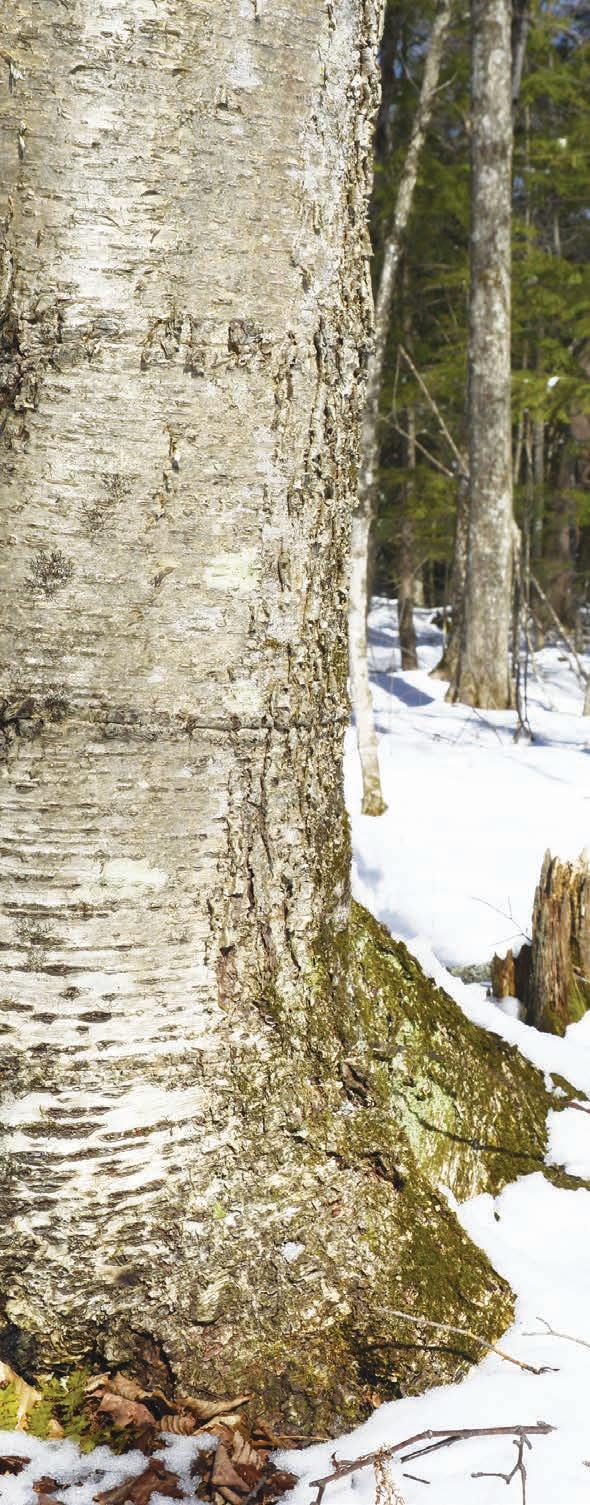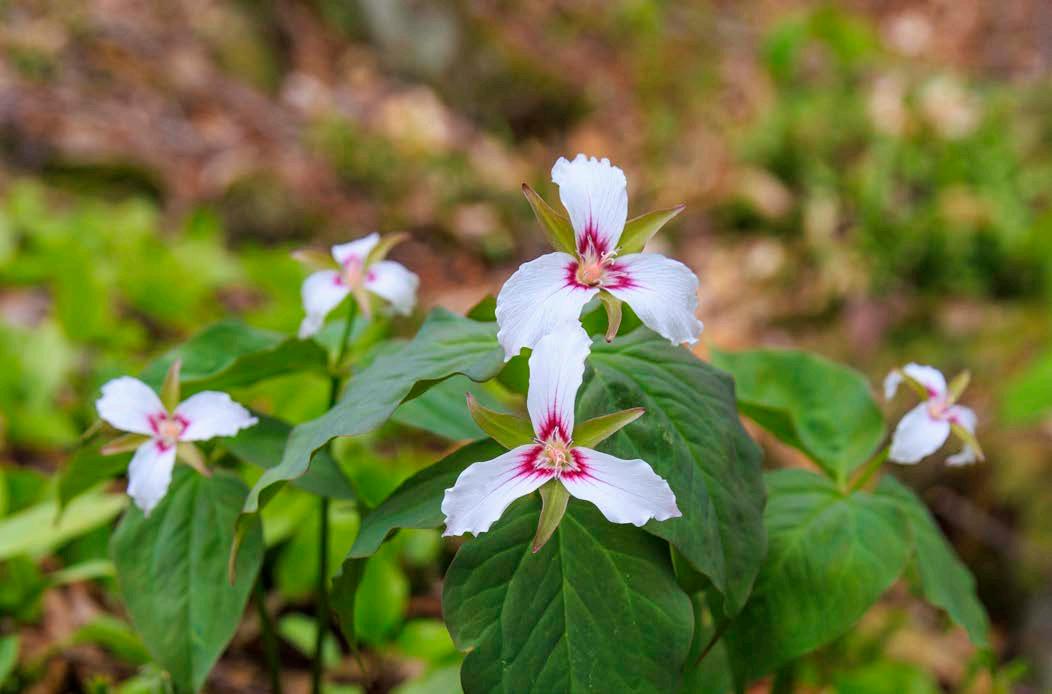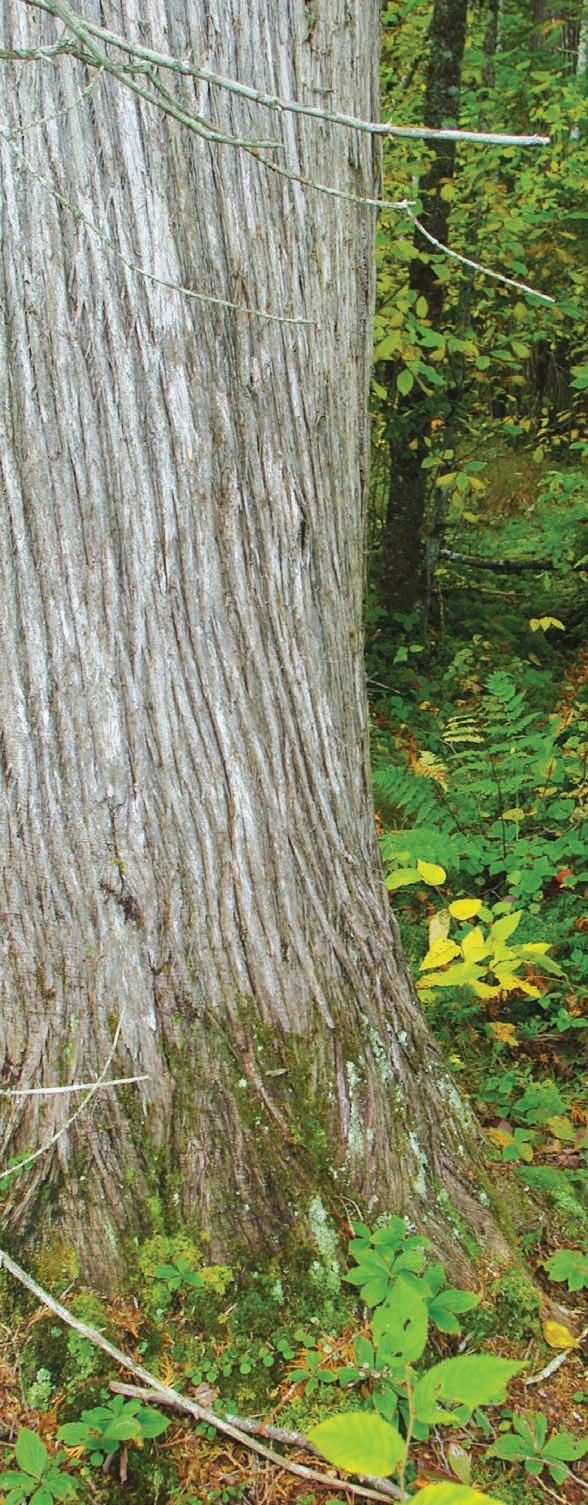
Conserving Forever-Wild Landscapes for Nature and People


Conserving Forever-Wild Landscapes for Nature and People
Wilderness is self-willed land, where nature directs the ebb and flow of life.
Wilderness is not simply a special kind of place; rather it’s a special kind of commitment we make to a place. That commitment is freedom for the creatures at home there, and for the natural processes that create the integrity, beauty, and diversity of the land and its inhabitants.
Wilderness offers a range of benefits: irreplaceable wildlife habitat, superior carbon storage, clean air and water, a baseline for comparison with the managed landscape, solitude, and spiritual renewal. Most importantly, these protected sanctuaries of wild Nature simply have a right to exist for their own sake. And the result is wildly beneficial to people.

Rewilding equals hope. Its foundation is protected areas; there is no rewilding without wilderness.
The Global Charter for Rewilding the Earth defines rewilding as follows:
Rewilding means helping nature heal. Rewilding means giving space back to wildlife and returning wildlife back to the land, as well as to the seas. Rewilding means the mass recovery of ecosystems and the life-supporting functions they provide. Rewilding means restoring and protecting specific places—on land and in the ocean—where nature is free to direct the ebb and flow of life. Rewilding is about allowing natural processes to shape whole ecosystems so that they work in all their colorful complexity to give life to the land and the seas. Such wild lands and waters are critical to sustain ecological vitality by supporting intact food webs and natural processes.
Rewilding is also about the way we think. It is about understanding that we are one species among many, bound together in an intricate web of life that ties us to the atmosphere, the weather, the tide, the soils, the freshwater, the oceans, and all living creatures on the planet.
Northeast Wilderness Trust helps Nature rewild by protecting wilderness areas. It is the only regional conservation organization in the Northeast that puts wildness first and focuses exclusively on forever-wild conservation. There are hundreds of land trusts doing great work across the region, but only Northeast Wilderness Trust can say that every place protected is rewilding into a future old-growth forest.
“
In wilderness there is acceptance in the evolutionary processes of life. No plant or animal petitions for mercy. There are no complaints rendered or excuses made. There is only the forward movement of life and the inevitable end.
Terry Tempest Williams, “The Glorious Indifference of Wilderness,” 2014
For over two decades, Northeast Wilderness Trust has envisioned—and has actively worked to establish a landscape of connected and resilient wildlands shared by a human culture that recognizes the benefits of wild places. We envision a future Northern Forest region where bears and bobcats, warblers and wildflowers, pumas and people all have room to thrive.
Northeast Wilderness Trust fulfills its vision by remaining exclusively focused on its narrow mission: Conserving Forever-Wild Landscapes for Nature and People
Effectiveness
Integrity
Collaboration
Inclusion
Respect
Perpetuity

When an ecosystem is fully functioning, all the members are present at the assembly. To speak of wilderness is to speak of wholeness.
Gary Snyder, The Practice of the Wild
Humans are just one of many species. All of our relations in the biotic community have the right to freedom, food, and habitat.
Escalating habitat loss, species extinction, and climate change will not slow until people extend ethical consideration to the whole life community, and work together to protect a vibrant world characterized by healthy natural and human communities.
Establishing and safeguarding wilderness is a crucial and highly underrepresented component of an effective strategy to foster that essential future.
Support ecological processes operating on Nature’s time over the desire to perpetuate any assemblage of species of a particular time and place. We do not pick ecological winners and losers; we set the stage for evolution to continue.

Prioritize the needs of local birds, mammals, plants, fungi, fish, and other wild residents over human visitors on Northeast Wilderness Trust preserves and sanctuaries. Educational, cultural, scientific, and recreational uses are carefully weighed against their impacts on habitat security, wildlife mobility, and overall quality of life for the wild creatures who call these places home.
In 2020, Northeast Wilderness Trust adopted a bold strategic plan for a then-small organization. Most of the goals were accomplished two to three years early. Since 2020, Northeast Wilderness Trust’s staff and operating budget have each increased four-fold while successful initiatives such as the Wildlands Partnership and new programs like Wildlands Ecology have been launched. Most importantly, during the same five years the total acres safeguarded by Northeast Wilderness Trust more than doubled from 35,000 to 82,000.
This 2025–2030 Strategic Plan aims to build on the immense momentum of the past five years to further increase Northeast Wilderness Trust’s wild impact, in direct response to the urgency of this ecological moment in history. Northeast Wilderness Trust knows that wilderness works and will doggedly pursue increasing the amount of wilderness across the Northeast United States.
Our overarching goal of the next five years is to dramatically increase the pace and scale of wilderness protection across the Northeast while opportunities still abound. This goal will be achieved through the strategic pillars of Protect, Learn, Champion, and Sustain
Dave Foreman “
There is no more honorable thing any of us can do with our lives than to work to put part of the world off-limits to the activities of human beings.



Baxter State Park

VERMONT NEW HAMPSHIRE
Forever-Wild Places Protected by NEWT Other Protected Wilderness*
MASSACHUSETTS
CONNECTICUT RI
*GAP 1 status: Permanently Secured for Nature and Natural Processes, per TNC Secured Areas Database



Accelerate and expand wilderness protection—both land conservation and stewardship—guided by the principles that humans are but one species of many and wild places are home to our wild kin.
As we move through the second half of the decade, it has become more evident than ever that conserving wilderness is among the most effective tools for reversing biodiversity decline, helping mitigate climate change, and supporting human health and well-being.* We know that wilderness works and that wild Nature offers a hopeful path towards a resilient and bright future. However, we must act now.
Northeast Wilderness Trust will dramatically expand the pace of rewilding across the Northeast by partnering with Nature and protecting far more land as wilderness. This is our organizational North Star.
By 2030 . . .
Northeast Wilderness Trust will protect and safeguard 160,000 forever-wild acres doubling the protected area under our care.
* See e.g.: Di Marco, M., Ferrier, S., Harwood, T.D., Hoskins, A.J., Watson, J.E.M. Wilderness areas halve the extinction risk of terrestrial biodiversity. Nature 573, 582–585 (2019); Faison, Edward K., et al. Adaptation and mitigation capacity of wild forest in the northeastern United States. Forest Ecology and Management 544 (2023); and Edmund J. Zlonis, Gerald J. Niemi, Avian communities of managed and wilderness hemiboreal forests. Forest Ecology and Management 328 (2014)
Prioritize landscape-scale forever-wild conservation opportunities that further regional conservation goals and frameworks.
Expand Northeast Wilderness Trust’s existing preserves and sanctuaries.
Improve representation of diverse natural settings in protected lands.
Further the Wildlands Partnership and Old Growth For All conservation initiatives to encourage more land trusts and partners to embrace forever-wild conservation and connect more people to wilderness.
Expand participation in regional coalitions and conservation initiatives, while actively cultivating and broadening relationships with diverse stakeholders.
In 2020, Northeast Wilderness Trust launched the Wildlands Partnership, a grant program that offers partner land trusts funding to protect forever-wild land. Since its inception, the initiative has conserved more than 9,000 acres. Northeast Wilderness Trust is now working to launch Old Growth For All, a new initiative that aims to connect human communities to protected wild natural communities, offering the chance for more people to feel, breathe, and experience wildness close to home. The pilot for the initiative took place in Jaffrey, New Hampshire, where the town generously donated a forever-wild conservation easement on 142 acres to Northeast Wilderness Trust. Children’s Woods and Carey Park, in the middle of Jaffrey, is now forever-wild and Northeast Wilderness Trust will replicate this success elsewhere.


Enhance understanding of the many ecological qualities of wilderness and rewilding through research, field study, and knowledge sharing.
Northeast Wilderness Trust’s approach to land conservation rests on fostering a reciprocal relationship with the natural world that surrounds us. That same philosophy of kinship extends to the new Wildlands Ecology Program, guided by the tenets of partnering with, listening to, and learning from Nature.
By 2030 . . .
Northeast Wilderness Trust will expand the Wildlands Ecology Program to bolster the scientific understanding of wilderness conservation and rewilding, enhancing organizational effectiveness and gaining public support.
Gain a deeper knowledge of Northeast Wilderness Trust preserves and sanctuaries by conducting thorough ecological assessments and long-term monitoring.
Lead on-the-ground research on the effects of passive rewilding across the region.
Partner with research institutions, universities, and others to support and develop published science on wilderness and rewilding in the Northeast.
Integrate the Ecology Program into all aspects of Northeast Wilderness Trust, from staff and board training, to land conservation and stewardship, to communications and philanthropy.
Share learned ecological knowledge internally and externally.
There is much that we don’t know about how a passively rewilding northeastern forest changes over time. Most of the region’s forestland is actively managed and only about five percent is legally protected in a way that ensures that natural processes will continue indefinitely with limited human disturbance making long-term research uncommon and challenging. As a result, much of the science that is published about forests in the Northeast does not focus on wilderness. Northeast Wilderness Trust’s growing Ecology Program aims to change that. Since 2022, Northeast Wilderness Trust has been setting up rewilding forest research plots across Vermont, Maine, and New York. These permanent plots will be resampled every five years, providing a quantitative look at what changes take place in the plant and tree communities over time as a forest rewilds. In the next five years, the team will add more plots across the region and begin the resampling process for those already established. By looking closely at how these forests recover and evolve from past human uses, Northeast Wilderness Trust hopes to glean lessons that can be applied to future conservation work, and to improve the stewardship of already-protected lands.


Elevate the understanding of, relationship with, and support for wilderness.
To achieve Northeast Wilderness Trust’s goals, there must be increased public enthusiasm for the protection of wilderness and commensurate philanthropic partnership. With a carefully defined audience and a focus on accelerating conservation outcomes, Northeast Wilderness Trust will expand its communications reach to champion the idea of wilderness as a natural climate solution, as a way to reverse biodiversity loss, and for its own sake.
By 2030 . . .
Northeast Wilderness Trust will increase the number of landowners, land trusts, community members, agencies, and philanthropists who understand and embrace wilderness.
Strengthen community around a growing network of Ambassador Preserves places protected by Northeast Wilderness Trust where we encourage people to experience wild Nature firsthand to connect with and better understand its essential needs.
Increase programming online, in-person, and in wild forests that connects more people to wild Nature and the ideas of wilderness and ecocentrism (naturecentered worldview).
Elevate Northeast Wilderness Trust as a trusted conservation partner and a rewilding thought leader with an ecocentric and science-driven approach.
Ensure wide coverage of conservation success stories.
Engage, across the region, with state-level and regional policy efforts and/or partnerships and coalitions to further wilderness protection.
Over the past five years, Northeast Wilderness Trust launched two initiatives that champion the idea of wilderness and connect more people to wild places: the Spring Speaker Series and BioBlitzes. The virtual Spring Speaker Series has helped elevate diverse wilderness voices and share touching stories and valuable perspectives with a wider audience than is possible with “live-only” events. For those who are able to venture to a Northeast Wilderness Trust preserve, BioBlitzes are ecologist-led citizen scientist experiences where people explore a protected habitat and help document the many species who call those places home. In the next five years, Northeast Wilderness Trust will expand both of these efforts to reach more people.


Through organizational excellence and best practices, continue building an enduring and principled institution that can deliver on the promise of perpetuity.
To advance the strategies of Protect, Learn, and Champion, Northeast Wilderness Trust will mobilize private and public resources at greater scale.
Northeast Wilderness Trust will increase its capacity and elevate its reputation as an efficient, transparent, professional, and mission-driven organization.
Ensure that organizational capacity both short-term and long-term matches organizational goals by increasing private philanthropy and public funding.
Maintain financial stability through strong governance, rigorous fiscal management, and proper oversight.
Create new forms of donor engagement that emphasize the regional scope of Northeast Wilderness Trust.
Streamline processes, systems, and governance structure to meet the demands of a growing regional organization.
Uphold our commitment to a just and equitable world for Nature and people.
Land acquisition is just the start of rewilding. When it comes to wilderness recovery, permanence is paramount. Northeast Wilderness Trust’s commitment to permanence is why, as a policy, on every property protected, a forever-wild conservation easement is donated to a third party. Northeast Wilderness Trust is working to ensure that the resources needed in the future to safeguard the lands we protect today are being secured through a growing network of wildlands philanthropists and enthusiasts.
Northeast Wilderness Trust’s board-designated Stewardship and Operating funds grew from a combined total of $2.5 million in 2020 to over $12 million by the end of 2024. Both of these designated funds help ensure that Northeast Wilderness Trust will be here for the long haul.

Northeast Wilderness Trust’s work is rooted in an ecocentric worldview, where all species are recognized as having inherent rights. We deemphasize resources and recreation and instead focus on relationship. We strive to partner with Nature and foster an attitude of respect and kinship. These sentiments are interwoven with our understanding of the immense value of wilderness—to shelter wildlife and reverse extinction, to mitigate climate change, to provide clean air and water, and to offer places where people find spiritual renewal.
Our overarching organizational philosophy means we are different. Every place Northeast Wilderness Trust protects is a future old-growth forest. This is accomplished by either acquiring land or by working with partners and utilizing conservation easements. With either strategy, the result is permanently protected wild habitat and a setting for rewilding.
Northeast Wilderness Trust cannot rewild the Northeast on its own. Beyond direct land conservation and stewardship, Northeast Wilderness Trust also champions wilderness through land trust education, funding, and partnerships; hosting events in wild places; and through public seminars, presentations, and media outreach.
From the Adirondacks to Maine to Connecticut, Northeast Wilderness Trust secures wild places where Nature can thrive, wildlife can wander, and people can find beauty and reflection.

